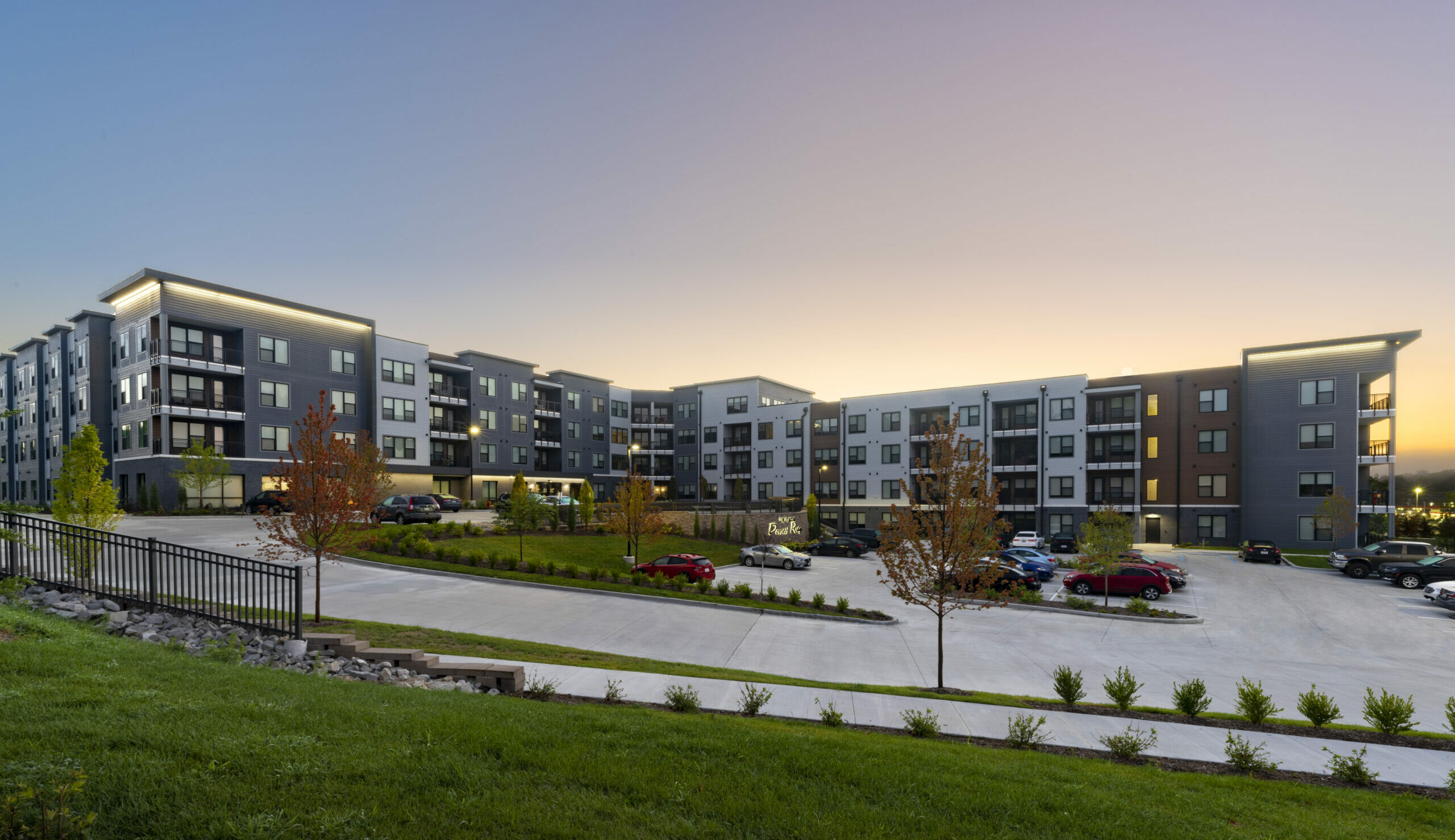
By Adam Berkelhamer, AIA, associate principal, FitzGerald
The City of Denver is evolving. The 2020 U.S. Census tracked a population growth within the city of nearly 20 percent over the ten years prior, and this kind of growth naturally brings about change. A city that was long considered a bargain for those seeking access to fresh air and outdoor activities is now — like many other cities across the nation — in the grips of what can at times seem to be an unshakeable housing crisis. As scarcity continues to drive the cost of living upward, it creates a risk of pushing people out and creating communities that are less diverse. In order to tackle the housing crisis and foster an equitable community, we need to build more housing. But this is easier said than done and requires careful strategizing in the face of growing obstacles.
Why is it so hard to build?
One of the challenges hindering the production of needed housing is the fundamental distaste for density that some residents have. Perhaps understandably, they fear watching the Denver that they knew and loved become something they don’t recognize — but without increasing density, there is a finite amount of people who can live in a certain area, and the city will not be able to continue accommodating its population growth. Other factors hindering the building of new housing units relate to the current unpredictability of the industry. While the spikes in material costs from the pandemic have greatly diminished, material prices continue to rise, and labor shortages and supply chain delays continue to challenge development. And now, with interest rate increases and banking system fragility, the challenges of acquiring financing for development are very significant.
Additionally, through well-intentioned codes and initiatives, certain government regulations have slowed the process and made seeking building approvals a more difficult task. When compared with many other major cities, the planning department in Denver imposes more stringent requirements for approvals. Earlier this year, the city put into place a mandatory affordable housing ordinance requiring multifamily projects with 10 or more units to allocate between 8-15 percent of the units as income-restricted for 99 years. This is an admirable initiative and arguably the right thing to do, but it does add another layer of risk and cost concerns for developers planning new projects. Paired with the adoption of more progressive energy codes, these new requirements can discourage some developers from seeking new building permits. Jurisdictions across the country grapple with creating development policies that help meet the needs of their communities — and managing the use of the “stick” of policy with a “carrot” of incentives is an important approach to bring to governance. In cities like Chicago and New York, for instance, the mandates for inclusive housing have been mitigated to a significant degree by recent property tax incentives passed by the corresponding state governments. Cooperation across jurisdictions and stakeholders can yield welcome results.
How do we move forward?
The main question we ask ourselves as architects is how do we help our clients achieve their goals at a time when it is so difficult to build? First and foremost, we need to put ourselves in our client’s shoes and place their needs in front of our own. We believe that the ego of the architect should not play a role in the design of buildings — a design isn’t “good” unless it works for everyone. To this end, we try to design buildings in a way that makes the most sense and that responsibly utilizes available resources. We strive to create simple, elegant, and efficient buildings: they need to function well, live well, and also be beautiful to look at. Additionally, in this unpredictable landscape, value engineering is simply an unavoidable project phase. If we do the difficult thinking up front, we will have less to cut out down the road.
As architects, we do not drive policy, we react to it. We need to understand the policy and work within its boundaries. Our role is to responsibly guide our clients through all challenges, with an in-depth knowledge of local codes and ordinances, and by anticipating problems before they arise. It’s important to remember that we are all a team — the architects, the developers, the construction team, and the city government. We can all embrace communal goals and work to solve them together. There is also an opportunity in this challenging time to encourage ourselves to think more creatively. What do we have an overabundance of that can help address our shortages? I believe one of the next big adaptive reuse trends will be the repurposing of our underutilized office buildings for housing. It’s so important to preserve old buildings where we can — let’s use what we already have to help solve for what we do not.
Looking Ahead
Denver is in a moment of transformation. As with any kind of change, there will be those who embrace and enjoy it, and there will be those who lament the loss of the way things were. Those who are able to become comfortable with the direction the city is headed in are those who will enjoy it most in the long term. It can be hard to see the look of your city change before your eyes, but I believe there is also beauty in cities that have managed to organically marry a mixture of styles from different eras, creating a visual timeline of history. As architects, all we can do is strive to create buildings and spaces that foster community and diversity, and that contribute to a more well-balanced and equitable society.









